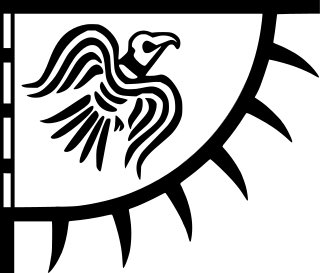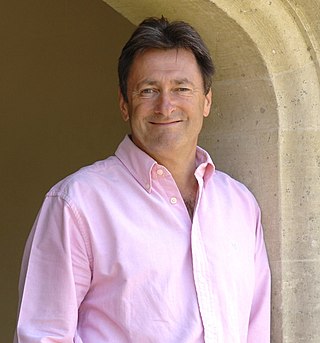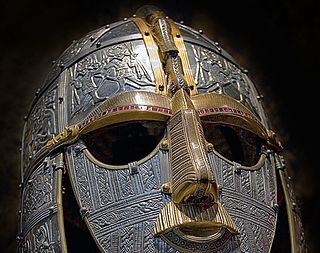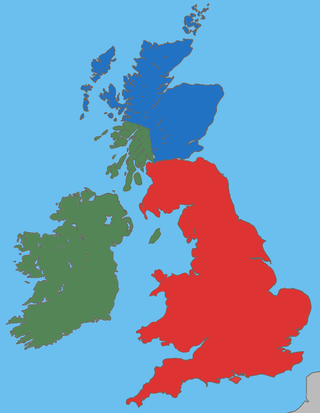
Lindisfarne, also called Holy Island, and the Holy Island of Lindisfarne, is a tidal island off the northeast coast of England, which constitutes the civil parish of Holy Island in Northumberland. Holy Island has a recorded history from the 6th century AD; it was an important centre of Celtic Christianity under Saints Aidan, Cuthbert, Eadfrith, and Eadberht of Lindisfarne. The island was originally home to a monastery, which was destroyed during the Viking invasions but re-established as a priory following the Norman Conquest of England. Other notable sites built on the island are St. Mary the Virgin parish church, Lindisfarne Castle, several lighthouses and other navigational markers, and a complex network of lime kilns. In the present day, the island is an Area of Outstanding Natural Beauty and a hotspot for historical tourism and bird watching. As of February 2020, the island had three pubs, a hotel and a post office.

The Danelaw was the part of England in which the laws of the Danes held sway and dominated those of the Anglo-Saxons. The Danelaw contrasts with the West Saxon law and the Mercian law. The term is first recorded in the early 11th century as Dena lage. The areas that constituted the Danelaw lie in northern and eastern England, long occupied by Danes and other Norsemen.

Athelney is a village located between the villages of Burrowbridge and East Lyng in the Sedgemoor district of Somerset, England. The name is believed to be derived from the Old English æþeling meaning "prince" + -ey meaning "isle". The village is best known for once being the fortress hiding place of King Alfred the Great, from where he went on to defeat the Great Heathen Army at the Battle of Edington in May 878.

Alan Fred Titchmarsh HonFSE is an English gardener and broadcaster. After working as a professional gardener and a gardening journalist, he became a writer, and a radio and television presenter.
Bryan Clifford Sykes was a British geneticist and science writer who was a Fellow of Wolfson College and Emeritus Professor of human genetics at the University of Oxford.

Sub-Roman Britain is the period of late antiquity in Great Britain between the end of Roman rule and the Anglo-Saxon settlement. The term was originally used to describe archaeological remains found in 5th- and 6th-century AD sites that hinted at the decay of locally made wares from a previous higher standard under the Roman Empire. It is now used to describe the period that commenced with the recall of Roman troops to Gaul by Constantine III in 407 and to have concluded with the Battle of Deorham in 577.

The Welsh are an ethnic group native to Wales. "Welsh people" applies to those who were born in Wales and to those who have Welsh ancestry, perceiving themselves or being perceived as sharing a cultural heritage and shared ancestral origins.

The Britons, also known as Celtic Britons or Ancient Britons, were the indigenous Celtic people who inhabited Great Britain from at least the British Iron Age until the High Middle Ages, at which point they diverged into the Welsh, Cornish and Bretons. They spoke Common Brittonic, the ancestor of the modern Brittonic languages.

Julian C. Richards, is a British television and radio presenter, writer and former professional archaeologist with over 30 years' experience of fieldwork and publication.
The Manx are an ethnic group originating on the Isle of Man in the Irish Sea in northern Europe. Their native culture has significant Norse-Gaelic, Celtic, and English influences. The Manx language descends from Middle Irish.
The historical immigration to Great Britain concerns the movement of people, cultural and ethnic groups to the British Isles before Irish independence in 1922. Immigration after Irish independence is dealt with by the article Immigration to the United Kingdom since Irish independence.
The genetic history of the British Isles is the subject of research within the larger field of human population genetics. It has developed in parallel with DNA testing technologies capable of identifying genetic similarities and differences between both modern and ancient populations. The conclusions of population genetics regarding the British Isles in turn draw upon and contribute to the larger field of understanding the history of the human occupation of the area, complementing work in linguistics, archaeology, history and genealogy.
The English people are an ethnic group and nation native to England, who speak the English language, a West Germanic language, and share a common history and culture. The English identity began with the Anglo-Saxons, when they were known as the Angelcynn, meaning race or tribe of the Angles. Their ethnonym is derived from the Angles, one of the Germanic peoples who migrated to Great Britain around the 5th century AD.

The Anglo-Saxon settlement of Britain is the process which changed the language and culture of most of what became England from Romano-British to Germanic. The Germanic-speakers in Britain, themselves of diverse origins, eventually developed a common cultural identity as Anglo-Saxons. This process principally occurred from the mid-fifth to early seventh centuries, following the end of Roman rule in Britain around the year 410. The settlement was followed by the establishment of the Heptarchy, Anglo-Saxon kingdoms in the south and east of Britain, later followed by the rest of modern England, and the south-east of modern Scotland. The exact nature of this change is a topic of on-going research. Questions remain about the scale, timing and nature of the settlements, and also about what happened to the previous residents of what is now England.

The Insular Celts were speakers of the Insular Celtic languages in the British Isles and Brittany. The term is mostly used for the Celtic peoples of the isles up until the early Middle Ages, covering the British–Irish Iron Age, Roman Britain and Sub-Roman Britain. They included the Celtic Britons, the Picts, and the Gaels.

Viking activity in the British Isles occurred during the Early Middle Ages, the 8th to the 11th centuries CE, when Scandinavians travelled to the British Isles to raid, conquer, settle and trade. They are generally referred to as Vikings, but some scholars debate whether the term Viking represented all Scandinavian settlers or just those who used violence.
The People of the British Isles (PoBI) is an ongoing population genetics project based at the University of Oxford. The project began in 2004 and is ongoing. Professor Sir Walter Bodmer founded and leads the project.
Julian Daryl Richards is a British archaeologist and academic. He works at the University of York, and is director of the Archaeology Data Service (ADS), and Internet Archaeology. He is also the director of the Centre for Digital Heritage at the university, and contributed to the founding of The White Rose College of the Arts & Humanities. His work focuses on the archaeological applications of information technology. He has participated in excavations at Cottam, Cowlam, Burdale, Wharram Percy, and Heath Wood barrow cemetery.
The Battle of York was fought between the Vikings of the Great Heathen Army and the Anglo-Saxon Kingdom of Northumbria on 21 March 867 in the city of York.











